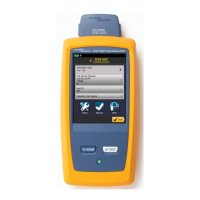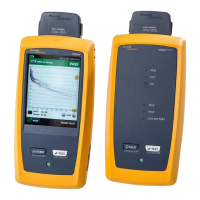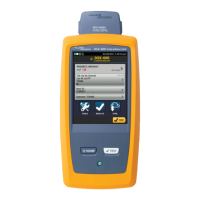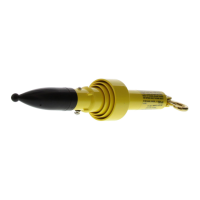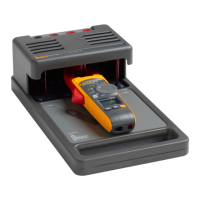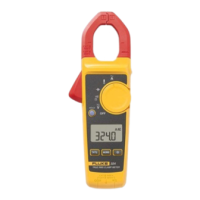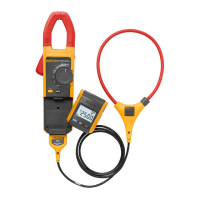Basic Cable Testing
High-Definition Time Domain Reflectometry (HDTDR)
7
7-21
Reflections from Opens
An open, or break, in the cable represents an abrupt increase in the cable’s
impedance. The impedance of an open is nearly infinite. In an open cable, a
signal’s energy is not dissipated by a terminating impedance, so the signal bounces
back towards the source. This reflection appears at the source with the same
amplitude and polarity as the original signal, as shown in Figure 7-12. By
measuring the amount of time taken for the reflected pulse to return, the test tool
can determine the location of the open in the cable.
Transmitted Pulse
Reflected Pulse
End of Fault
Open
Cable
Transmitted Pulse
Reflected Pulse
Short
Transmitted Pulse
No Reflected Pulse
Terminator
(Matches cable
characteristic
impedance)
OFF
PRINT
MONITOR
SETUP
SPECIAL
FUNCTIONS
SINGLE
TEST
AUTO
TEST
DSP-658
CABLE ANALYZER
DSP-601
CABLE ANALYZER ADAPTER
TALK
EXIT
ENTER
TEST
SAVE
1
23
4
OFF
PRINT
MONITOR
SETUP
SPECIAL
FUNCTIONS
SINGLE
TEST
AUTO
TEST
DSP-658
CABLE ANALYZER
DSP-601
CABLE ANALYZER ADAPTER
TALK
EXIT
ENTER
TEST
SAVE
1
23
4
FAULT
INFO
OFF
PRINT
MONITOR
SETUP
SPECIAL
FUNCTIONS
SINGLE
TEST
AUTO
TEST
DSP-658
CABLE ANALYZER
DSP-601
CABLE ANALYZER ADAPTER
TALK
EXIT
ENTER
TEST
SAVE
1
23
4
FAULT
INFO
FAULT
INFO
oy35f.eps
Figure 7-12. Signals Reflected from an Open, Shorted, and Terminated Cable
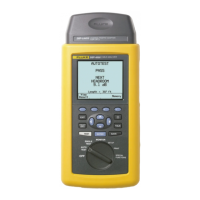
